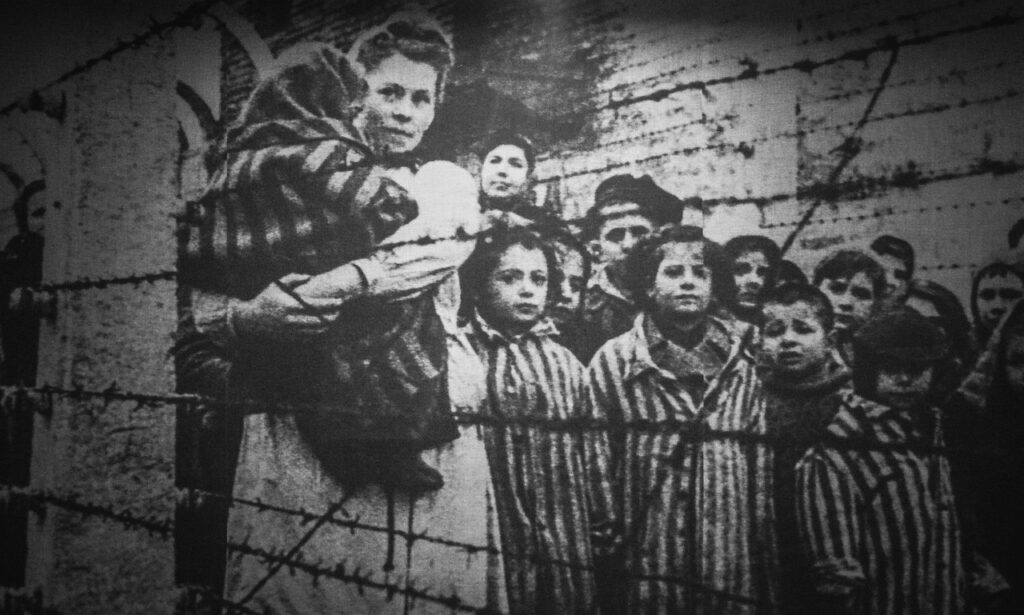As the World War II was moving towards its conclusion, the main architects of the Nazi movement – Adolf Hitler, Heinrich Himmler and Joseph Goebbels – managed to escape capture by committing suicide. Others were not able to avoid justice. They were rounded up and put up on trial for their roles in the systematic genocide committed during the war. Crimes against humanity was one of the charges levied against the twenty-four most senior Nazis captured, most of whom were found guilty for their respective roles. But there was one man who was conspicuously absent during the Nuremberg trials.
Nazi SS-Obersturmbannfurhrer or lieutenant colonel, Adolf Eichmann, who played a significant role in the organization of the Holocaust. He was responsible for managing the logistics of rounding up and deporting mass numbers of Jews and other unwanted groups to the ghettos and concentration camps across Eastern Europe. He was the one was oversaw the process that sent innocent men, women and children, young and old, to the death camps. But after the war, using falsified papers, he was able to escape Germany and make his way into Argentina. For fifteen years Eichmann lived a relatively normal, suburban life under the name Ricardo Klement until he was captured by the Israeli agents in 1960 and brought back to face trial in Jerusalem.

Eichmann’s capture reignited debate over how the Holocaust could have happened in the first place. It wasn’t possible for just a few warped minds to have effectively committed genocide on such a remarkable scale. The amount of planning and organization and logistics required the help of thousands if not millions of people. It required the involvement of all levels of soldiers perpetrating the actual crimes and millions of ordinary Germans wilfully turning a blind eye.
Some believed that there was a collective intent, that an entire population had abandoned all humanity and morality. Others saw it differently. The common defence that many Nazis and Germans offered after the war was less dramatic. “We had no choice.” They said, “We were just following orders.” That was the mantra. Whether they were senior officials held accountable for their roles, or ordinary soldiers and civilians who tried to rebuild a sense of normalcy after the upheaval of the war, they were able to rationalize their actions, avoiding personal responsibility by holding their superiors accountable. This is what they would tell their grandchildren. “We were just following orders”.
Stanley Milgram and his experiment on obedience to authority
Stanley Milgram, a Yale psychologist, wanted to understand more. Were we humans such lemmings that if someone who outranked us, someone in a position of authority, ordered us to do something entirely counter to our moral code, our sense of right and wrong, we would simply obey? Sure it’s possible on a small scale, but on such a mass scale?
So in 1961, just a few months after Adolf Eichmann’s trial began in Israel, Milgram designed an experiment to understand our obedience to authority. The experiment was relatively simple. In each enactment, there were two volunteers. One would play the role of the teacher and the other would play the role of the student. The person who played the student was actually another scientist involved in the experiment. (To assign the roles, the volunteer was asked to pick up a piece of paper out of the hat that indicated if they would be the teacher or the student. In fact, both folded pieces of paper said “teacher” on them, giving the illusion to the volunteer that their role was picked by chance.)
The volunteers who played the role of the teachers, were recruited from the newspaper ad and told they were taking part in an investigation into memory and learning, sat at a console with a series of switches. Each one was told that a series of questions would be asked of the student. If the student got the wrong answer or refused to answer the question, the teacher was to flip a switch on the console to administer an electric shock to the student.
There were thirty switches on the console, labelled from 15 volts to 450 volts. With each switch labelled in 15-volt increments, it was made very clear to the teacher that with each switch the shocks would get increasingly more severe. The final range, 435 to 450 volts, was painted red and marked simply “XXX”

As expected, all the volunteers expressed concern. As they realized or believed they were causing pain to the student, they would look up to the scientist, standing next to them in a white lab coat with clipboard in hand, and ask if they should continue despite the pain they are knowingly inflicting. The first time the volunteer expressed a desire to stop the experiment or no longer be a part of it, the scientist would say “Please continue”. If the volunteer expressed a desire to stop a second time, the scientist would say, “The experiment requires that you continue”. As they went further and further down the line of switches, some of the volunteers started to get nervous. Very nervous. They started shaking and sweating. Although extremely uncomfortable, most went on with the experiment. Upon the third request to halt the experiment, the scientist replied coldly, “It is absolutely essential that you continue”. After the fourth protest, the scientist responded simply, “You have no other choice, you must go on”. If any other protests were expressed, the experiment would immediately end.
Before the experiment, the scientists had predicted that 2 to 3 percent would go all the way upto 450 V in administering shock to the student – in short, taking their lives and those people would exhibit psychopathic tendencies. But the actual results were horrifying.
65 percent of the volunteers were able to go through the entire experiment, reach the final switch and for all intents and purposes, kill someone. Upon the conclusion of the experiment, despite believing that the student may be hurt or worse, the volunteers expressed concern for their own culpability, insisting that they should not be held responsible since they were only “following the orders of the authority”. Eventually, the volunteers (teachers) were debriefed and shown that the student, who was played by the scientist, was fine and unhurt.
Interestingly, nearly all those volunteers who refused to continue to take part in the experiment once they realized they were causing pain to someone else felt accountable to a greater moral imperative. Some were religious but all of them felt they were accountable to a higher authority than the scientists in the room.
The Milgram experiment thus infers that majority of us would take up an action to suit the orders given by the authority similar to the Nazis and the Germans, who were just “following orders”, while committing a heinous crime to the millions of the Jews who were killed on the night of Holocaust unless we introspect and act with a sense of morality.
Thanks for reading.
Source: Leaders Eat Last by Simon Sinek










